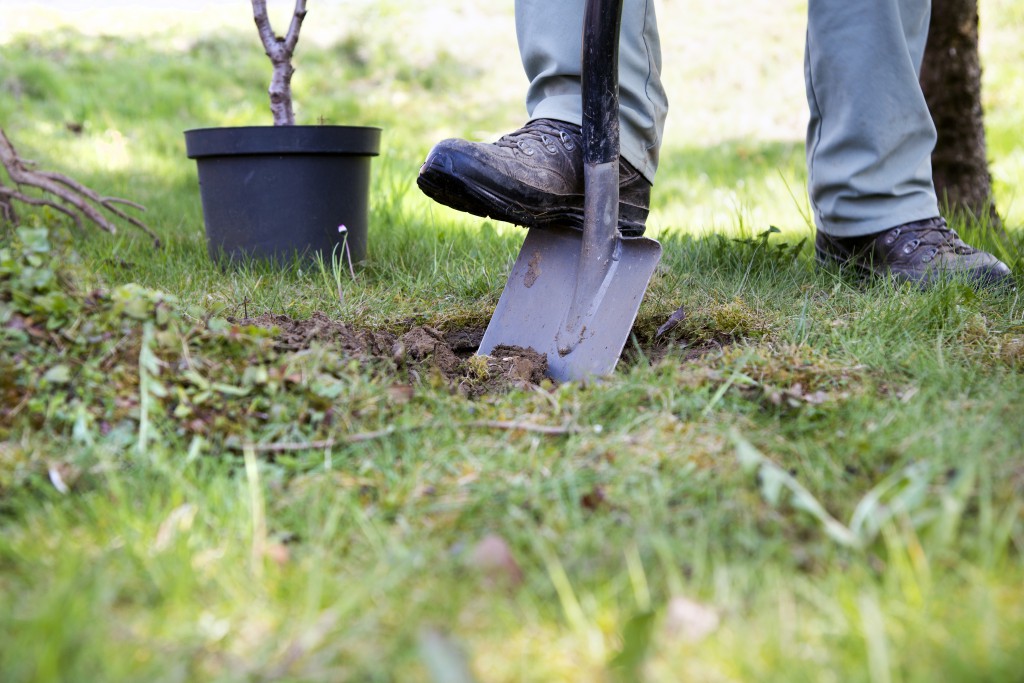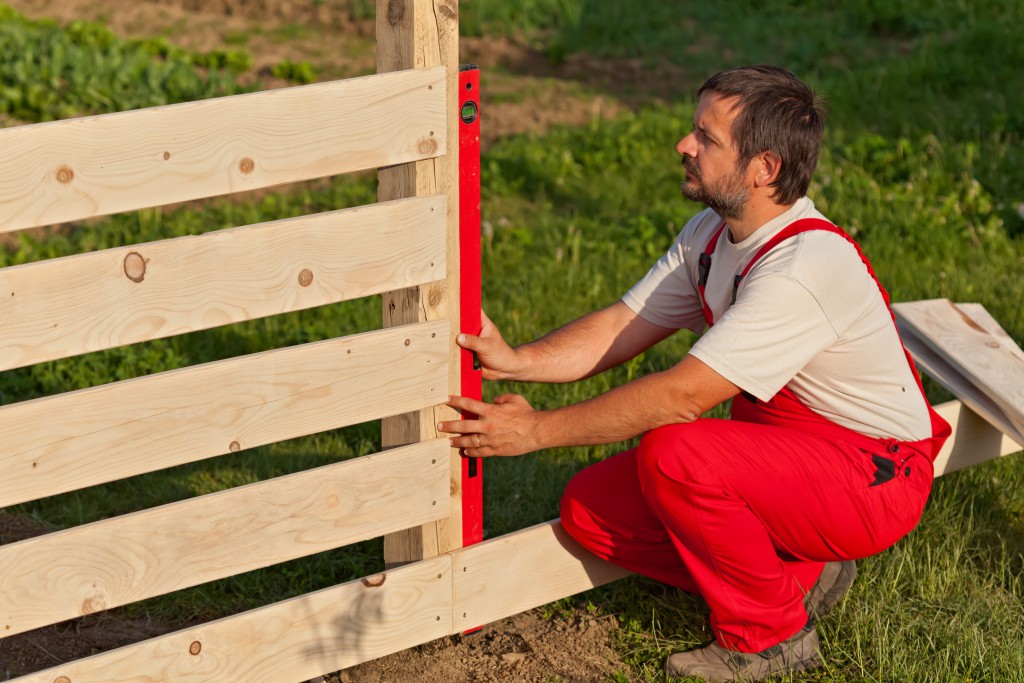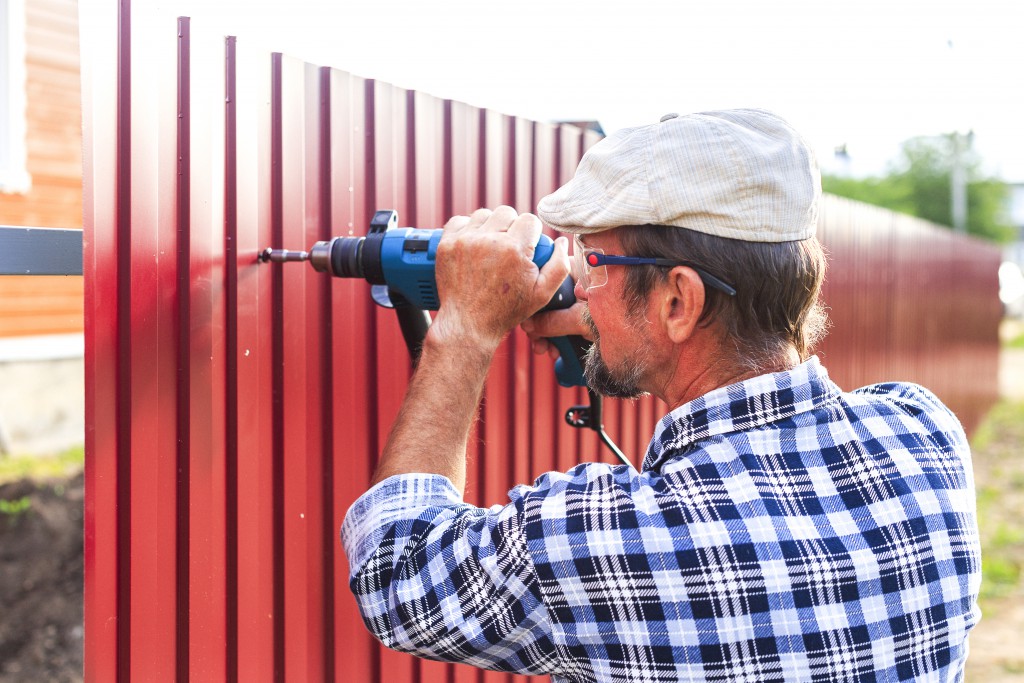As with all ground-work, before you start, identify where all pipes, drains and cables run and that none are in your way.
Select Your Fence Posts
Remember that you need stouter ones at corners and for gate posts. Timbers like cedar, juniper or yew are ideal because they resist rot. In any case, apply a timber treatment before you sink them into the ground, unless the merchant has done this for you - he may have posts already pressure-treated with water repellent. Wrapping the post end in roofing felt is still a good idea.
Setting Out
Don’t just start at one end and hope for the best - measure out the site. Cast a straight line marked with taut string or a long tape measure (unless you have a theodolite), and then tap in a marker where each post will go - usually at 6’ intervals for attaching panels and 8’ or more if you’re using rails.
Dig the Holes

Dig all of them - if you only do one at a time, it will be harder to line the posts up later. A post hole digger is better than an ordinary spade because it helps you get to the right depth without creating a crater of loosened material. Ideally, holes should be a third of the post length, but if you affix Metapost supports (post spikes), you’ll be all right with a bit less.
Drop in the Posts
Try to get them vertical, in line and the same height. To keep them in position, some people attach temporary support batons as ‘feet’ - one end on the ground and the other nailed diagonally on to the post. Others partially backfill with some large rocks or broken bricks - just enough to stop them slipping in any direction.

Backfill
For permanence, do this with concrete or Hanson post fix. A prod with a stick helps it settle in. If you wish, leave a couple of inches unfilled so that you can turf over it. Allow to dry (48hrs).
Alternative Method
Set in post-sockets (e.g. the Metpost bolt-down) for posts to drop into later. The drawback is that it’s harder to get them in the perfect position without a theodolite and spirit level.
Attach Panels or Rails
You can attach wooden rails (like a farm fence) or a variety of panels - overlap is one of the cheapest and most popular (e.g. the Grange Elite).
If your posts aren’t the same height, you can trim the tall ones down (a Makita circular saw is ideal). To attach panels, use rust-resistant nails (a Paslode nail-gun makes life easier) or exterior-grade brackets and screws. You’ll probably want three brackets at each end, depending on the fence height and panel weight.
The bottom edge of the panel should be raised off the ground or else it will rot (put chocks underneath while you’re securing it).
Post Caps
Pressure-treated 100mm Grange flat post caps prevent water and insects attacking the post end grain. The panels can also be topped with fence capping for more weatherproofing and better appearance.
Preservative
Options include Everfield Fencemate, Ronseal One Coat or Lumberjack wood preserver. The inexpensive Ronseal Precision Finish Power Sprayer makes light work of applying it.


